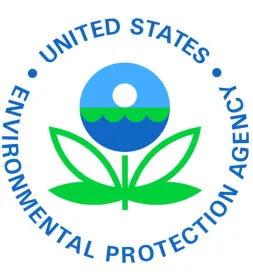The U.S. Environmental Protection Agency (EPA) will publish a Federal Register notice on October 29, 2019, announcing the availability of and soliciting public comment on the draft Toxic Substances Control Act (TSCA) risk evaluation of methylene chloride (MC). EPA states that it is also submitting the same document to the TSCA Science Advisory Committee on Chemicals (SACC) for peer review and that SACC will convene an in-person public meeting to consider and review the draft risk evaluation on December 3-4, 2019. Preceding the in-person meeting, there will be a preparatory virtual public meeting on November 12, 2019, for SACC to consider the scope and clarity of the draft charge questions for the peer review. Registration for the preparatory virtual meeting must be completed on or before November 12, 2019, to receive the webcast meeting link and audio teleconference information. Written comments for the preparatory virtual meeting and requests for time to present oral comments are due by 12:00 p.m. on November 8, 2019. Written comments on the draft risk evaluation that are submitted to EPA on or before November 26, 2019, will be provided to SACC for review and consideration before the December 3-4, 2019, meeting. Requests to present oral comments at the in-person meeting are due December 3, 2019. Publication of the Federal Register notice on October 29, 2019, will begin a 60-day comment period on the draft risk evaluation. The draft risk evaluation is not yet publicly available and is not expected to be until the notice is published on October 29, 2019, and Docket ID EPA-HQ-OPPT-2019-0437 is created at http://www.regulations.gov.
Background
In the Federal Register notice, EPA states that MC, also known as dichloromethane and DCM, “is a volatile chemical used as a solvent in a wide range of industrial, commercial and consumer applications.” According to EPA, the primary uses for MC are for paint removal, adhesives, pharmaceutical manufacturing, metal cleaning, aerosol solvents, chemical processing and flexible polyurethane foam manufacturing. Information from the 2016 Chemical Data Reporting (CDR) for MC indicates the reported production volume is more than 260 million pounds per year (manufacture and import). Information about the problem formulation and scope phases of the TSCA risk evaluation for MC is available at http://www.epa.gov/assessing-and-managing-chemicals-under-tsca/risk-evaluation-methylene-chloride-0.
On March 27, 2019, EPA published in the Federal Register a final rule that prohibits the manufacture (including import), processing, and distribution of MC for consumer paint and coating removal. 84 Fed. Reg. 11420. Under the final rule, paint removal products containing MC are prohibited from being sold at any retail or distribution establishments that have consumer sales, including e-commerce sales. The final rule also requires manufacturers, processors, and distributors to notify retailers and others in their supply chains of the prohibitions and to keep records. Additionally, EPA solicited public input for a future rulemaking that could establish a training, certification, and limited access program as an option for risk management for all of the commercial uses of MC in paint and coating removal. More information is available in our March 20, 2019, memorandum, “EPA Bans Consumer Sales of Methylene Chloride Paint Removers, Seeks Comment on Program for Commercial Uses,” and July 22, 2019, memorandum, “Communication and Recordkeeping Requirements Related to EPA Ban on Consumer Use Paint Removers Containing Methylene Chloride Go in Effect on August 26, 2019.”
Commentary
The risk evaluation of MC is interesting for several reasons. EPA completed a risk assessment of MC under old TSCA in 2014 and used that assessment as the basis for a Section 6(a) regulation proposed in 2017 by the Obama Administration. As most readers know, the Trump Administration decided not to proceed with the full scope of the proposed regulation of consumer and commercial uses in paint and coating removal products. As discussed above, EPA issued in final a Section 6(a) rule prohibiting consumer paint and coating removal uses of MC while issuing an Advance Notice of Proposed Rulemaking (ANPR) requesting comment on a regulatory approach to address training, certification, and limited access programs in commercial paint and coating removal operations. Subsequent TSCA regulation of commercial uses of MC will likely be based on the new risk evaluation of MC. Insofar as this is the first risk evaluation that concerns a chemical for which EPA previously completed a risk assessment under old TSCA (the others include trichloroethylene and N-methylpyrollidone), the new assessment will offer an interesting contrast with its predecessor both generally and specifically with regard to EPA’s approach to meeting the risk evaluation requirements under amended TSCA.


 />i
/>i

